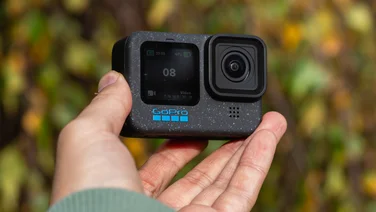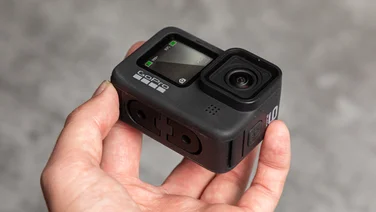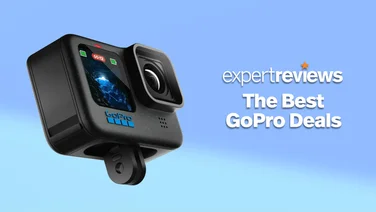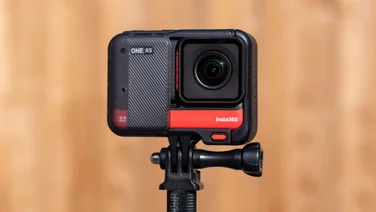To help us provide you with free impartial advice, we may earn a commission if you buy through links on our site. Learn more









- Large 1in sensor
- Water- and shock-proof
- Professional level controls
- No image stabilisation
- No in-camera 4K recording
- Short battery life
We were excited by the Sony RX0 when we first saw it at IFA in October 2017. Here was a tiny, 4K-capable action camera with a sensor around four times the size of the one in GoPro’s Hero 6, along with a host of professional-level features. It looked as if Sony was onto a winner.
For various reasons the tiny RX0 falls short, the reasons for which you’ll read about below. In short, though, this action camera fails because it’s too niche, more difficult to use and generally less flexible than its GoPro rivals.
READ NEXT: The best action cameras to buy in 2018
Sony DSC-RX0 review: What you need to know
Let’s start with the good stuff, though. The Sony RX0 marks an inflection point for the compact video camera industry because it’s the first to use a bigger sensor. And by big, I mean it has a 1in sensor – the same found in the Sony RX100 V III – where all other action cameras, including the £400 Hero 6 Black, are limited to far smaller, quarter-inch sensors.









This is important. It means the camera can capture four times the amount of light, which means better performance in low light and greater dynamic range. It also has some negative implications for depth of field, but I’ll get onto that in the image-quality section further down.
The bigger issues for the RX0 are that it doesn’t actually record 4K footage in-camera – you need an external recorder like the Atomos Ninja Flame – and aside from being an awkward arrangement to strap to your helmet, surfboard or bike, that’ll double the price of an already expensive camera.
Oh, and the RX0 also doesn’t have in-camera optical or electronic image stabilisation.









Sony DSC-RX0 review: Price and competition
The Sony RX0 is the most expensive video camera of its type I’ve ever tested. It costs £780, which is almost double the price of a GoPro Hero 6 Black, which I already thought was expensive for an action camera.
If all you want is a lightweight, good-quality camera you can strap to your surfboard, this is clearly not it. The GoPro Hero 6 Black is the best you can buy for those purposes and that costs roughly £400. The Hero 5 Black, which also shoots in 4K, is now available for less than £300, and the Yi 4K+ for around £320. All these cameras are easier to use and will give better results for the majority of users.
Sony DSC-RX0 review: Features and design
Instead, the RX0 is best classed as an alternative production camera. A compact shooter that can be used in places other cameras cannot, as a backup to your main camera or as a more discreet way of capturing high-quality footage. Notwithstanding the fact that it’s waterproof to 10m, shockproof and crushproof, this is not a camera best suited to the extreme sports lifestyle.
So what DO you get for your extra cash? There’s the one inch Exmor RS CMOS sensor, of course, but otherwise not a huge number of bells and whistles, at least on paper. As I mentioned previously, 4K can only be recorded via the camera’s Micro-HDMI output to an external 4K recorder and for most purposes this would be a rather cumbersome, not to mention expensive setup.
In-camera you only get 1080p recording and for day-to-day shooting this can be captured at frame rates up to 60fps in Sony’s XAVC-S format, AVCHD or H.264 MP4 files.









In slow motion, however, you can capture at up to 1,000fps. Yep, that’s right: 1,000fps. This allows you to shoot some truly impressive slow-motion footage, although only in bursts of roughly a second. You also get 500fps and 250fps modes but again these are of limited duration.
This is something the GoPro Hero 6 Black cannot do. The sixth-generation action camera also doesn’t have zebra striping – a professional-level feature where the camera indicates areas where the image is overexposed, so you can address the problem before it’s too late – and neither does it have the rectilinear, 2m wide-angle lens of the Sony. That means you don’t get that fisheye look as you do with GoPro cameras – there’s no distortion at all – although the flipside is that the field of view isn’t nearly as wide.
Another bonus of the Sony is that you can connect an external microphone and control audio levels manually. Likewise, it’s possible to focus the camera manually, with the camera zooming in and employing focus-peaking to help you get everything as sharp as possible.









These features are complemented by a full range of modes, ranging from the fully automatic Intelligent Auto and Intelligent Auto+ for both still shots and movies, right down to fully manual mode and a flat S-LOG 2 colour profile so the footage can more easily be colour graded in post-production.
And, as with a GoPro, you can also control the camera, and view and download clips using the accompanying smartphone app. Sony’s PlayMemories app currently has one big flaw, though; it doesn’t work yet on Android Oreo phones. Sony needs to hurry up and sort this out – and quickly.
Sony DSC-RX0 review: Quality, practicality and usability
It doesn’t take long to see that the quality of the image produced by the Sony is superior to a GoPro. That’s not surprising given the larger sensor but it is clear nonetheless. In low light, though there is a slight degree of noise, but it’s nowhere near as distracting or as intrusive as it is on the Hero or other devices of its ilk. In automatic mode, the camera adapts beautifully to extremes of brightness and darkness in a scene, capturing sunsets nicely without the highlights blowing out.
When it gets really dark, ugly noise begins to impinge on your footage but, make no mistake, the RX0 is a better video camera than rivals with smaller sensors when it comes to raw quality. Still image quality isn’t too shabby, either.
The Sony RX0’s problem isn’t really with image quality, though; rather it’s with practicality. First, the screen is tiny and when the sun hits it, it’s very difficult to see. The buttons surrounding it – two on the right edge and three underneath – are absolutely tiny and using them to select the camera’s various options is an exercise in precise digit positioning.
Second, due to its 24mm lens, it’s a touch trickier to compose your shots than it is with a true action camera. With the Hero 6 Black, you can point the camera at a scene and be reasonably sure that everything is in shot. That’s not true of the RX0. The f/4.0 aperture and large sensor mean the depth of field is narrower, too, and this makes it trickier to get things in focus.
This, by the way, is the most awkward aspect of the RX0 and it’s exacerbated by the fact that the RX0 doesn’t autofocus at all while it’s recording. So, while it’s great that manual focus is possible, if you’re shooting from the hip, which is surely part of the appeal of such a compact camera, focussing manually using the RX0’s tiny buttons isn’t practical at all.
Instead, you’ll find yourself, as I did, toggling the camera’s NEAR mode on and off, depending on the circumstances. With NEAR mode on, subjects between 0.5m and 1m away will be in focus; with it off, it’ll focus on everything beyond a metre. It works, but this is cumbersome in the extreme and you’ll probably also find that you forget which mode you’re in half the time, rendering shots in the wrong mode blurry and useless.
The battery lasts hardly any time at all, with Sony rating it at 35 minutes for on-off shooting and 60 minutes of continuous capture. That’s hardly surprising given how small the battery is, but if you’re on an all-day shoot, you’ll need to carry spare batteries or budget time to charge via a battery pack.









And last, but by no means least, I’m seriously unimpressed with the memory card cover on the rear of the camera; it’s held on with only a tiny strip of plastic, which detaches from the body of the camera with alarming ease. Given that removing it means the camera is no longer waterproof, it’s a bit of an issue.
Sony DSC-RX0 review: Verdict
I’m not sure what to make of the Sony RX0. On the one hand, Sony has seemingly achieved the impossible, squeezing the big sensor from its excellent RX100 cameras into a body little bigger than a matchbox. Raw image quality, as a result, is truly impressive, and Sony also bestows the RX0 with a full array of professional tools, from zebra-striping to focus peaking and all sorts in between.
However, for every big positive, the RX0 strikes back with an equally unfortunate negative. It lacks in-camera 4K recording and, more importantly, the tools needed to make it a practical proposition for shooting out and about. So, sure, you can get great shots from it, but you’ll only be able to truly make the most of it if you mount it on a gimbal stabiliser and take the time to set up the point of focus before your shots.
That, coupled with the tiny screen, fiddly buttons and ridiculous port flap cover severely undermines what might otherwise have been a groundbreaking camera.








